Gas hoses for gas stoves: varieties, how to choose and connect
During repairs in the kitchen, there is almost always a need to replace or rearrange the gas stove, and hence its reconnection. It is advisable to entrust the work to a qualified, certified gasman, but you still have to choose and buy equipment yourself.
In this article we will consider gas hoses for gas stoves, which one is better, how to choose and connect equipment, and also talk about what flaws are found in gas hoses, and why they are dangerous.
The content of the article:
Methods for connecting gas stoves
More recently, about 30 years ago, gas hoses were not common and stoves were connected steel pipe. Such a connection is very reliable and durable, because the pipe does not leak, withstands high temperatures and is resistant to oil. However, it is not possible to move the plate connected in this way, even by a centimeter. That is why, and also because of the complexity of installation, now such a connection is not practiced.
The first to replace the rigid connection came the so-calledoxygen hosesmade on the same principle as car tires. The base is woven from heavy-duty cord yarns, and they are already covered with rubber on both sides. Such hoses withstand tremendous pressure - up to 20 atmospheres, they are available in a wide range of diameters (from 16 mm) and lengths, are easy to install and are quite cheap.
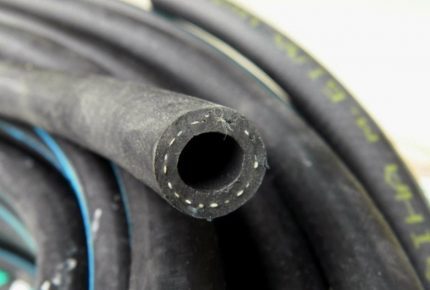
Rubber fabric hoses - the closest heir to oxygen, differ only in the use of a special textile thread instead of cord. They are produced and sold today, and are inexpensive.However, due to the fragility of the rubber, they can also not be used in apartments, but to connect the stove to a gas cylinder in the country, this is perhaps the most convenient option.
Varieties of modern gas hoses
Rubber hoses today are more likely a rarity than an everyday product. They are too short-lived, and the black rubber looks unaesthetic, and it is impossible to paint it.
Therefore, when you have to choose which hose to buy for connecting a gas stove in an apartment, it is better to stop at one of 3 main options: bellows, rubber reinforced and PVC hose. Let's consider each of them in more detail.
Rubber reinforced hoses
Perhaps these are the most common, inexpensive and reliable gas hoses. Externally, this eyeliner is exactly the same as the water supply, only in the braid instead of blue or red, yellow threads are woven.
Such hoses are three-layer. The inside is a polymer layer that prevents cracking and leakage. Medium - vulcanized rubber - the basis of the hose, its stiffness and density. Steel wire outer lash - for protection against external damage and extra rigidity.
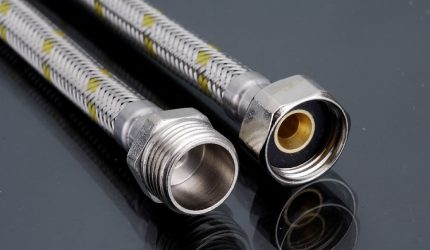
The advantages of these hoses are low price and a large assortment, ease of installation and durability. Disadvantages - a relatively short life (about 10 years), high electrical conductivity (inserts - dielectrics are required).
PVC reinforced sleeve
They are also three-layer: a reinforcing mesh is poured between two layers of polyvinyl chloride. In this case, the inner layer is usually black, and the outer one is either completely yellow or with a yellow stripe.
It is by their color that they can most quickly be distinguished from water hoses - but not the most reliable, it is worth checking the marking.

Such gas hoses have several advantages:
- do not conduct electricity - this is the only modern option, the use of which without a dielectric is absolutely safe;
- suitable for various combustible mixtures - both in the city gas pipeline and for mixtures from a cylinder;
- withstand pressure up to 0.63 MPathat is 20 times greater than the maximum working pressure in the network;
- Available in different lengths - from 40 cm to 5 m;
- cost several times lower than bellows analogues;
- polyvinyl chloride is much stronger and more durable than rubber, much less susceptible to cracking;
- Shelf life 12 to 20 years. Given that the service life of a gas stove usually also does not exceed 20 years, this is quite enough.
Among the shortcomings can be noted only a relatively small stiffness.
Bellows hoses for plates
A bellows is a corrugated pipe made of rings or a spiral that resembles a sewer corrugation or a hose from a shower faucet.Bellows there are 4 types of hoses: regular corrugated, solidmetal plastic, metallic, with stainless steel corrugation; with polymer coating over stainless steel - to protect against electricity; withthermal protective valves that automatically shut off the gas supply in case of overheating.
Gas hoses of this design have a number of advantages: safe, the probability of leakage is minimal; withstand pressure up to 6 atmospheres, which is 200 times higher than the maximum working pressure in the gas supply network; look aesthetically pleasing; durable - the manufacturer’s warranty is usually at least 10 years; the life of such a hose for a gas stove is about 30 years.
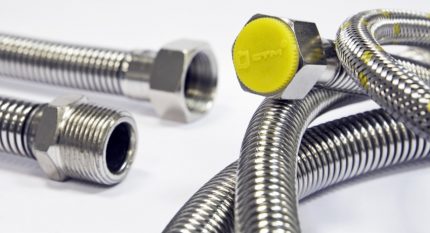
In addition, they withstand temperatures up to 200 ° C, bend and stretch a little, are fixed in a given shape with corners - can be positioned beautifully and safely, do not rust and crack, are protected from any external influences, have sufficient rigidity - do not break off and do not twist, easy to install. In most models, the fitting with the corrugation is either soldered or made with an integral product - this is much more reliable than a clamp or glue.
Even with such a substantial list of advantages, these hoses also have disadvantages. In addition to relatively high prices, they are dangerous by electrical conductivity (if there is no polymer spraying), and therefore can burn out from contact with household appliances or even the cable of the stove itself.
How to choose the best option?
Choosing a hose to connect the stove to the gas pipeline is a difficult and very responsible task, because you risk the safety of your home and life, as well.
In order to choose the appropriate option from the whole variety described above, you need to decide on several parameters:
- Hose length In the connected state, it should sag a bit - so that the stove can be moved aside for cleaning or if anything falls over it. Installing the hose taut is not permitted - this is dangerous. The most popular sizes are from 1 to 2 m, but there are products from 40 cm, and the maximum length of domestic hoses reaches 4.5 and even 7 meters.
- Connection type. At one end of the hose, which is screwed to the stove, there will always be a nut with an internal thread - “mother”, but at the other end, on the side of the gas valve, there can be either the same nut or a fitting with an external thread - “father”. Pay attention to the connector on your gas tap.
- The diameter of the connection. Half-inch nuts are most commonly used, but are found at ¾ inches, and more exotic options. Measure the threads on your equipment.
- Metal compound. Avoid contact of white metal (steel) with yellow (brass) - this is unsafe.
- The diameter of the hose section for the full operation of all burners should be at least 1 cm.
- See which outlet is on your stove. If it is angular - excellent, if directed towards the wall - this can be dangerous. A hose wound directly on such an outlet maybreak offwhen the stove slides against the wall, and this is fraught not only with a weak gas pressure, but also with a leak. To avoid this situation, purchase an additional metal fitting corner. If there are 2 outputs on the stove, you will also need a stub.
- Evaluate your financial capabilities. Remember that expensive hoses will not only be safer and more beautiful, but will also last many times longer.
- If the hose may touch a microwave, dishwasher, or other electrical equipment, insulation is required. Choose PVC sleeve orbellows polymer coated hose.
Having decided on all these questions, you can reduce the number of hoses for selection to 2 - 4 pcs., And only from them to choose by price and appearance. In addition, to buy a quality gas hose, pay attention to some details.
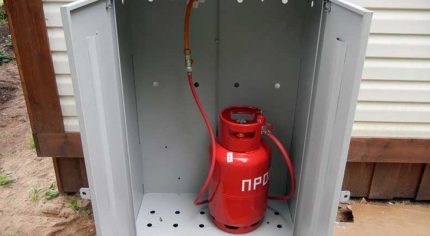
Address only in specialized shops and demand quality certificates for goods - this is your right and guarantee of safety.
Do not believe the offers to buy a branded sleeve at half price - most likely this is a low-quality Chinese fake. But do not refuse to buy just because it is made in China - many brands transfer their production of certified goods to this country without lowering control and quality standards.
See how the fitting is connected to the braid. Soldering orsolid the product is excellent, the glue is bad.
Familiarize yourself with the warranty period and the period of use in the product passport, compare them with the type of hose and price.
Also, buying an expensive brandedbellows gas hose, beware of fakes. Carefully inspect the product - it should be neat, with inconspicuous seams, without flaws, even small ones.
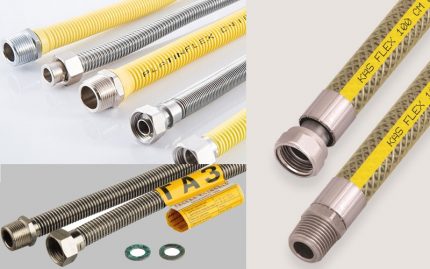
Take a look in the technical passport and check the correspondence of the description of reality. Demand a certificate of quality or at least a copy of it. Too low a price should alert, but a normal market price is not a guarantee of quality.
Differences between a gas hose and a water pipe
Connecting the hose for other purposes is extremely dangerous, because the water hose is not designed for contact with gas, which is why it quickly wears out and begins to poison. In addition, even gas hoses differ for different compositions and state of aggregation. So that the error in choosing a hose for supplying gas to the stove does not become fatal, consider several factors.
Firstly, absolutely everything gas hoses, regardless of type, are marked in yellow. It can be a braided thread, a yellow sticker on the hose itself or a mark on the package and a plug, but something yellow must be present. There should not be blue and red weaves - these are indicators of hot and cold water supply.
Secondly, the purpose of the hose must be indicated in the product passport and quality certificate. Gas hoses differ in the composition of rubber or polymer, manufacturing methods and operational characteristics - they cannot be interchanged, no matter how similar they look.
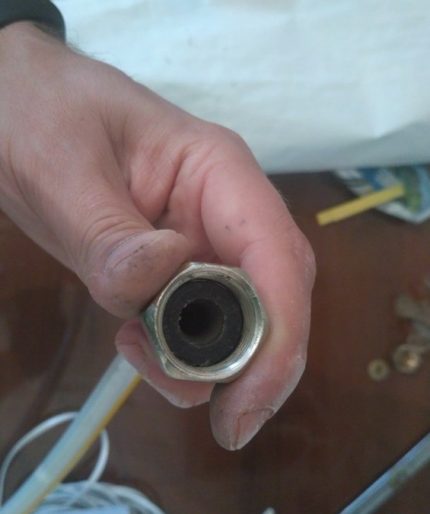
Thus, it is necessary to distinguish the purpose of the hose, and if you do not fully trust the competence of the seller, be sure to require documents for the goods, where the manufacturer indicates that this hose is designed for gas.
Features of connecting a gas stove
The first thing you should remember if you decide independently connect the stove - Now you yourself are responsible for your life, and for the safety of the kitchen, and the stove itself. The manufacturer’s warranty does not apply if the work was performed by an unskilled master gasman.
If the risks do not bother you, we’ll give a brief instruction of actions.
- evaluate all the source data and, if necessary, buy the missing;
- if the diameter of the thread on the hose and on the plate or tap does not match, stock up with a suitable adapter -footwork;
- check availability paronite gaskets complete with hose. If it is not, buy the one with the net;
- if there are 2 exits on the stove, buy a plug and screw it tightly into the outlet farthest from the gas pipe;
- when connecting a hose with an open metal sheath, it is better not to skimp on the dielectric - a special insert with a plastic core that does not conduct current;
- Install all the necessary adapters, but try to minimize their number. The dielectric is screwed into the gas valve, and a hose is already screwed onto it;
- screw one end of the hose to a gas valve or dielectric, or futorka if available;
- tighten tightly with an open-end wrench, but do not be too zealous so as not to break the thread;
- position paronite gasket at the exit of the plate;
- screw the other end of the hose to the plate. The nut rotates freely on the hose so that it should not twist or break off;
- Dissolve solid soap or mix liquid with water. Apply the resulting solution to all connections, including factory ones on the hose;
- open the gas tap, but do not turn on the hotplates, but watch carefully. If soap bubbles have not appeared at any junction, you can use the stove.
When connecting the gas stove yourself, remember that the hose must not come into contact with electrical appliances and wires, and also hide behind furniture - this is unsafe.
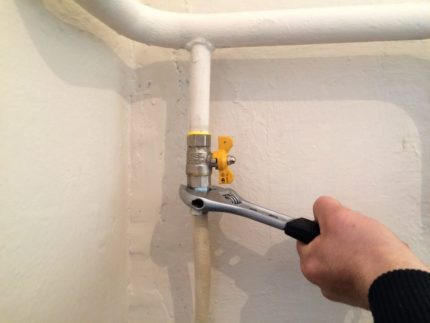
Connection Safety Precautions
Every year, explosions and ignitions of domestic gas occur in different parts of our country, causing fires and large-scale destruction, injuries and deaths. So that such a disaster does not happen to you, do not neglect any of the safety rules set out below, because such a risk and savings can cost, subsequently, very expensive.
The hose should be one, integral, without extension cords and unnecessary connections. Each connection is a potential leak point, and compound hoses are prohibited according to GOST.
You cannot hide the gas hose behind furniture or paint - buy one that suits you externally. It is forbidden not only to be able to inspect the hose at any time, but also in order to instantly notice a malfunction and replace gas hose. The paint overdries and promotes cracking of the rubber.
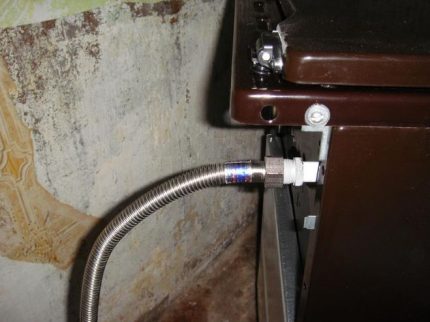
From gas tap There should be one connection, without overclocking and branching. If necessary, call the gasman, who will output another tap using a pipe.
It is not recommended to use gas hoses to connect gas stoves that are larger than 2 m. If necessary, extend or move the gas pipe - a metal gas pipeline is more reliable, safer and much more durable.
Do not allow the hose to twist or bend - this will negatively affect not only the gas pressure, but also safety. At the bend, and when twisting - at the fitting of the fitting, the hose will quickly leak and begin to poison.
Change the hose regularly following the expiration date specified by the manufacturer. Do not use a hose in the apartment whose service life is less than 10 years, for example, rubber. After 2 - 3 years of constant use, it may become unsafe.
Do not weld or solder near the hose; avoid condensation. If possible, invite a specialist to any work on the gas pipeline - your own safety is always more expensive than their services.
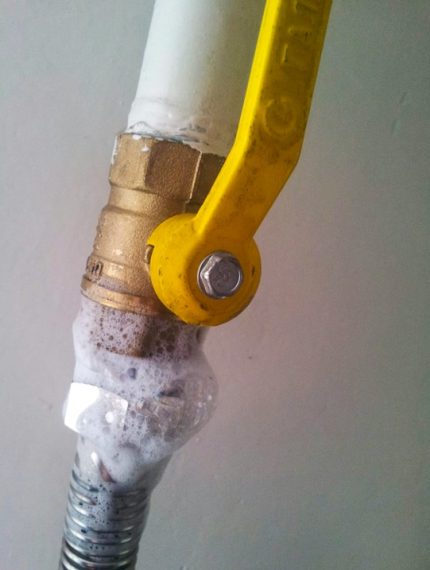
Do not neglectelectrical insulated a metal hose and do not touch household appliances and wires. Even if the wiring in your kitchen is in perfect order, the catalyst for discharge, burning of the hose and ignition can be, for example, lightning striking the gas pipeline.
Conclusions and useful video on the topic
In the next video, we will talk about how to choose the right gas hose for connecting the stove:
Given all the above, the choice of a hose for connecting a gas stove is a very responsible task, in which the savings should not be put above safety. Having carefully studied all aspects, you can choose and buy the best gas hose for your stove, without overpaying, but without risking yourself, your family and neighbors.
And on which gas hose for connecting the stove did you choose and why? Please tell other visitors to our site about this.Write your comments, ask questions, share experiences - the communication block is located below.

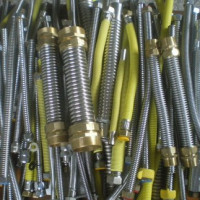 Gas hoses: types of gas hoses + how to choose the best
Gas hoses: types of gas hoses + how to choose the best  Dielectric insert for gas: varieties of gas couplings and installation tips
Dielectric insert for gas: varieties of gas couplings and installation tips 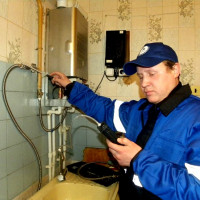 Maintenance of gas stoves in apartments: what is included in the maintenance, timing and frequency of service
Maintenance of gas stoves in apartments: what is included in the maintenance, timing and frequency of service 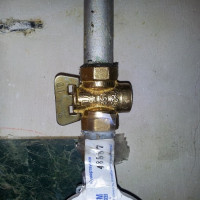 Gas valves: varieties, basic characteristics + selection criteria
Gas valves: varieties, basic characteristics + selection criteria 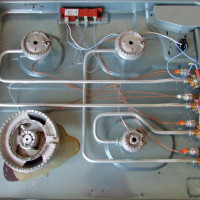 Repair of gas stoves Hephaestus: the most common breakdowns and methods for their elimination
Repair of gas stoves Hephaestus: the most common breakdowns and methods for their elimination 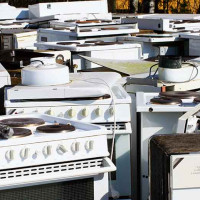 Disposal of gas stoves: how to get rid of an old gas stove for free
Disposal of gas stoves: how to get rid of an old gas stove for free  How much does it cost to connect gas to a private house: the price of organizing gas supply
How much does it cost to connect gas to a private house: the price of organizing gas supply  The best washing machines with dryer: model rating and customer tips
The best washing machines with dryer: model rating and customer tips  What is the color temperature of light and the nuances of choosing the temperature of the lamps to suit your needs
What is the color temperature of light and the nuances of choosing the temperature of the lamps to suit your needs  Replacement of a geyser in an apartment: replacement paperwork + basic norms and requirements
Replacement of a geyser in an apartment: replacement paperwork + basic norms and requirements